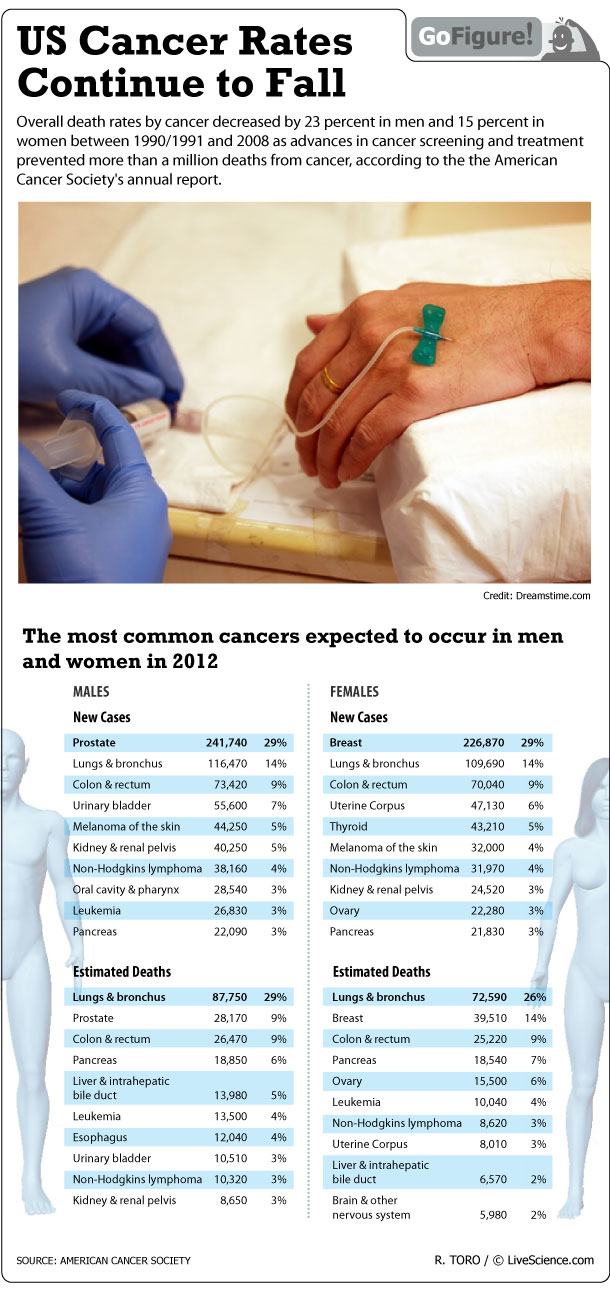Deaths from Cancer in US Drop (Infographic)

There's good news and bad news. The good news is that deaths from cancers between 2004 and 2008 have dropped in the United States by 1.8 percent per year in men, and by 1.6 percent per year in women.
Even so, the rates of new cases of a few specific cancers, including pancreatic cancer, melanoma and cancers of the thyroid and kidney, are on the rise, according to a new report called Cancer Statistics 2012 by the American Cancer Society.
In the report, published online ahead of print in the journal CA: A Cancer Journal for Clinicians, the researchers found that the reduction in overall cancer death rates since 1990 in men and 1991 in women translates to the avoidance of more than a million total deaths from cancer during that time period.
Some other findings in the report:
- A total of 1,638,910 new cancer cases and 577,190 deaths from cancer are projected to occur in the United States in 2012.
- The most rapid declines in death rates occurred among African American and Hispanic men, 2.4 percent and 2.3 percent per year, respectively.
- Death rates continue to decline for all four major cancer sites (lung, colorectum, breast and prostate), with lung cancer accounting for almost 40 percent of the total decline in men and breast cancer accounting for 34 percent of the total decline in women.
As for why we've seen a rise in deaths from some cancers, the report authors say they aren't entirely sure. However, thsy suggest part of the increase (for esophageal adenocarcinoma and cancers of the pancreas, liver and kidney) may be linked to the increasing prevalence of obesity as well as increases in early detection practices for some cancers. Whatever the reason, these rising trends will exacerbate the growing cancer burden associated with population expansion and aging, say the researchers, adding that more research is needed to determine their underlying cause.
- The Top 10 Cancer-Fighting Foods
- 10 Do's and Don'ts to Reduce Your Risk of Cancer
- The 10 Deadliest Cancers and Why There's No Cure
Get the world’s most fascinating discoveries delivered straight to your inbox.



